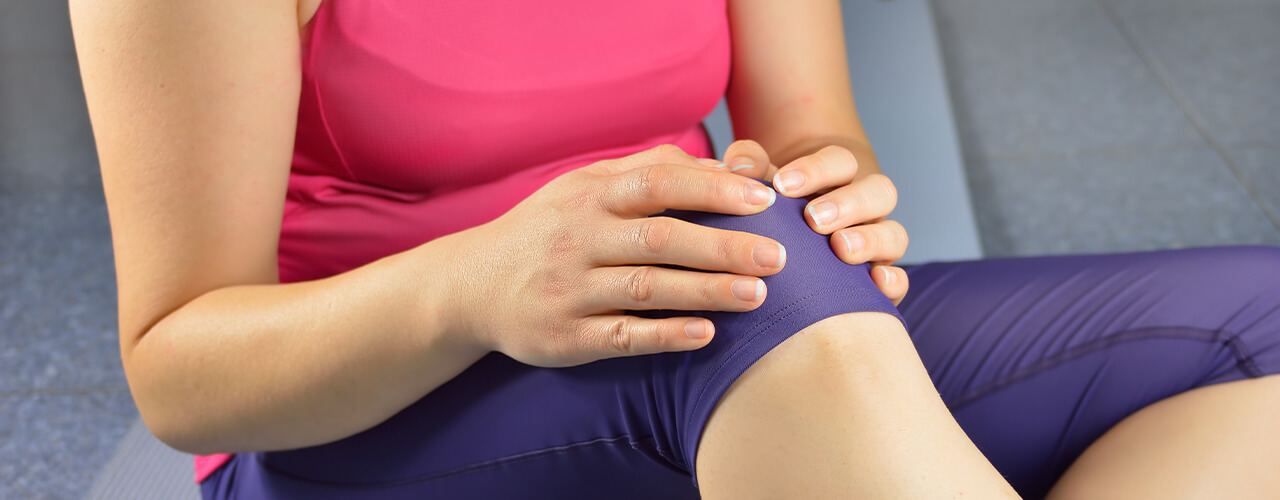Pain in Knee Chicago, IL
There are a variety of causes for both hip pain and knee pain. While the hip joint can withstand a good amount of wear of tear, it’s not indestructible. With age and usage, the hip cartilage can wear down. Muscles and tendons in the hip can also get overused. The anatomy of the knee is complex; it has bones, pads of cartilage and a joint capsule. Injury or aging can cause joint pain in the knee.
Causes of Hip Pain
Rheumatoid arthritis and osteoarthritis are the main culprits of hip pain in older folks. Both can lead to a breakdown of the cartilage and inflammation in the hip joint. Along with pain, there’s reduced range of motion in the hip and stiffness.
Bursitis can also cause pain in the hip. Bursae are the sacs of fluid that reduce friction. If they get inflamed, they can cause pain. Typically, it’s repetitive activities that irritate the hip joint and cause pain. Like bursitis, tendinitis can cause inflammation and is usually caused by repetitive stress from movement.
Muscle or tendon strain is also a result of overuse. Repeated activities can put strain on the ligaments, tendons and muscles that support the hips. If any of these are inflamed, the hip won’t work normally, and there will be pain.
Causes of Knee Pain
Rheumatoid arthritis and osteoarthritis can also cause knee pain. With the breakdown of cartilage due to osteoarthritis in the knee, the bones begin to rub against each other and cause pain. Rheumatoid arthritis is a chronic inflammatory disease of the joints. It affects the membrane that lines the knees’ joints. The end result is inflammation, joint damage and joint pain in the knee.
The knee joint is very prone to injuries. Common injuries include meniscal injuries, anterior cruciate ligament injuries and tendon injuries. The menisci can be torn if the knee is bent and twisted. Ligaments can be torn as well. If it’s not repaired, the risk of developing osteoarthritis increases. Any sudden change in direction or twisting motion can injure the anterior cruciate ligament. Most of the injuries are the result of a blow to the outside of the knee. Tendon injuries can result if the tendon is overstretched. Activities that can injure tendons include squatting, running and jumping. A dislocated kneecap is another common cause of pain in the knee. This occurs when the patella is moved out of position. It is very painful.
The Benefits of Physical Therapy for Hip and Knee Pain
There are many benefits of physical therapy. Improved mobility, reduction of pain, less inflammation and a better lifestyle are just a few. The initial visit to a physical therapist for pain in the hip will consist of tests, such as a gait evaluation, range of motion measurement and strength measurements. Then, your physical therapist will create a personalized treatment plan. Passive treatments may include ultrasound and ice. There will also be specific exercises to improve hip strength, pain and mobility. For pain in the knee, tests are also done along with passive and active treatments, such as stretching. Treatment with a physical therapist for pain in the hip or knee can result in a faster recovery and help you avoid surgery. Plus, you won’t have to just rely on pain meds anymore.
If you’re suffering from hip pain, knee pain or any type of joint pain, be sure to give us a call. Our trained and skilled physical therapists are your path to recovery. Be sure to set up a one-on-one consultation for a comprehensive assessment and say good-bye to pain. We are committed to giving you a healthy and painless life.For more information, Contact Us today at Chicago, IL Center.
FAQs
What causes knee pain?
Your knees are hinge joints that allow for the forward-and-backward motions within the joint. The knee is one of the largest joints in your body, made up of a complex system of bones, tendons, and ligaments. Because of this, the knee can be easily injured due to overexertion or repetitive motions. Additionally, knee pain can be caused due to an underlying ailment. Some of the most common causes of knee pain are sprains, strains, fractures, tears, dislocation, tendinitis, bursitis, and arthritis.
How long should knee pain last?
Some knee pain can ease on its own. However, if you notice persistent pain, you should contact a physical therapist. Many people try to push through the pain that they feel; however, this can actually cause an issue to worsen and become more problematic. Sharp or dull pain in the knee should be paid attention to and not pushed through. If pain persists, especially for three months or longer, it is in your best interest to contact a physical therapist, as that can be an indication of a chronic condition.
Is walking good for knee pain?
Knee pain can be debilitating, making it difficult to walk, run, and move. While exercise can certainly help heal the root cause of your knee pain, it is important to make sure to only do so under the discretion of your physical therapist. Your treatment plan will largely consist of targeted exercises and manual treatments; however, additional pain relief modalities may also be added as your physical therapist deems fit. This will help you improve any problem areas and prevent further injury from occurring.
What is the best therapy for knee pain?
Our licensed physical therapists will examine your knee for signs of misalignment or structural damage, in addition to examining your stance, posture, gait, and range of motion. After your physical exam is complete, your physical therapist will prescribe a physical therapy plan for you, aimed at relieving unnatural stresses and strains, and normalizing your joint function. Treatment plans for knee pain typically include activity modification, manual therapy, strength and capacity training, range of motion restoration, graded exposure to previously painful activities, and patient education regarding activity modification.



